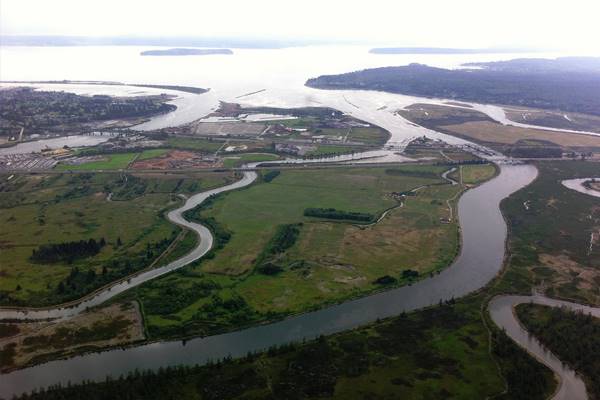NOAA Research Links River Flow with Changes in Chinook populations
Over the past 60 years, a changing climate has caused increased flow variability in waterways throughout the Puget Sound region. The endangered Chinook salmon that populate those waters have suffered from lessening productivity over the past couple of decades. A popular fish among anglers and researchers alike, the Chinook’s decline has attracted plenty of attention. Chinook are not alone in this unfortunate turn of events, flow variability and changing water depth impact fish in various water bodies and across the globe.
Research from the National Oceanic and Atmospheric Administration’s Fisheries division has found a link between varying river flow and the Chinook’s decline. The study, published in the journal Global Change Biology, indicates that this variability is the most significant of several environmental factors influencing the salmon’s well-being.
Chinook salmon exhibit highly regimented life histories, making them a fascinating but challenging fish to study. They hatch out of the substrate in mid-fall, then migrate to the ocean after the new year. Unable to resist shifting currents, both the eggs and freshly hatched larvae are vulnerable to the whims of the river.
“The exact mechanism is not known, but one hypothesis is that the increasing flow variability in those first few months results in increasing turbidity; the eggs get washed out,” said Eric Ward, a quantitative ecologist with NOAA Fisheries and lead author of the study.

Varying flow rates in waterways such as the Snohomish River could be problematic for endangered Chinook salmon. (Credit: NOAA Fisheries West Coast)
Ward and his co-authors dug through a publicly accessible NOAA Fisheries database for Chinook population and productivity data dating back to 1950. They compared that data with “some of the more conventional metrics of variability in the marine environment,” including total flow, flow variability and peak flow events, to see which did the best job at explaining variations in Chinook population levels. Ward said their study was unique in applying these metrics to a freshwater ecosystem.
Of the metrics examined, only flow variability proved to be a valid predictor of Chinook population growth. Furthermore, the study found that, in more than half the rivers from which data was utilized, flow variability has experienced a “strong and positive” trend since 1950. The increase is a result of more precipitation falling as rain rather than snow, leading to more extreme and frequent shifts in river flow.
With temperatures in the region projected to increase continually, Ward says it’s feasible that flow variability could continue rising as well. Although this variability should reach a theoretical cutoff point, it still bodes poorly for the endangered Chinook already threatened by pollution and high angling pressure.
Salmon habitat restoration projects that reopen side channels provide some relief from erratic flow rates, but more research will be necessary to uncover the precise mechanism connecting Chinook population fluctuations with flow variability.
“There are ways that we could probably improve the analysis in the future, larger sample sizes in different years,” Ward said. “I think there are more interesting questions we could certainly answer.”
“We want more precise field measurements to really validate these results,” he said.


0 comments